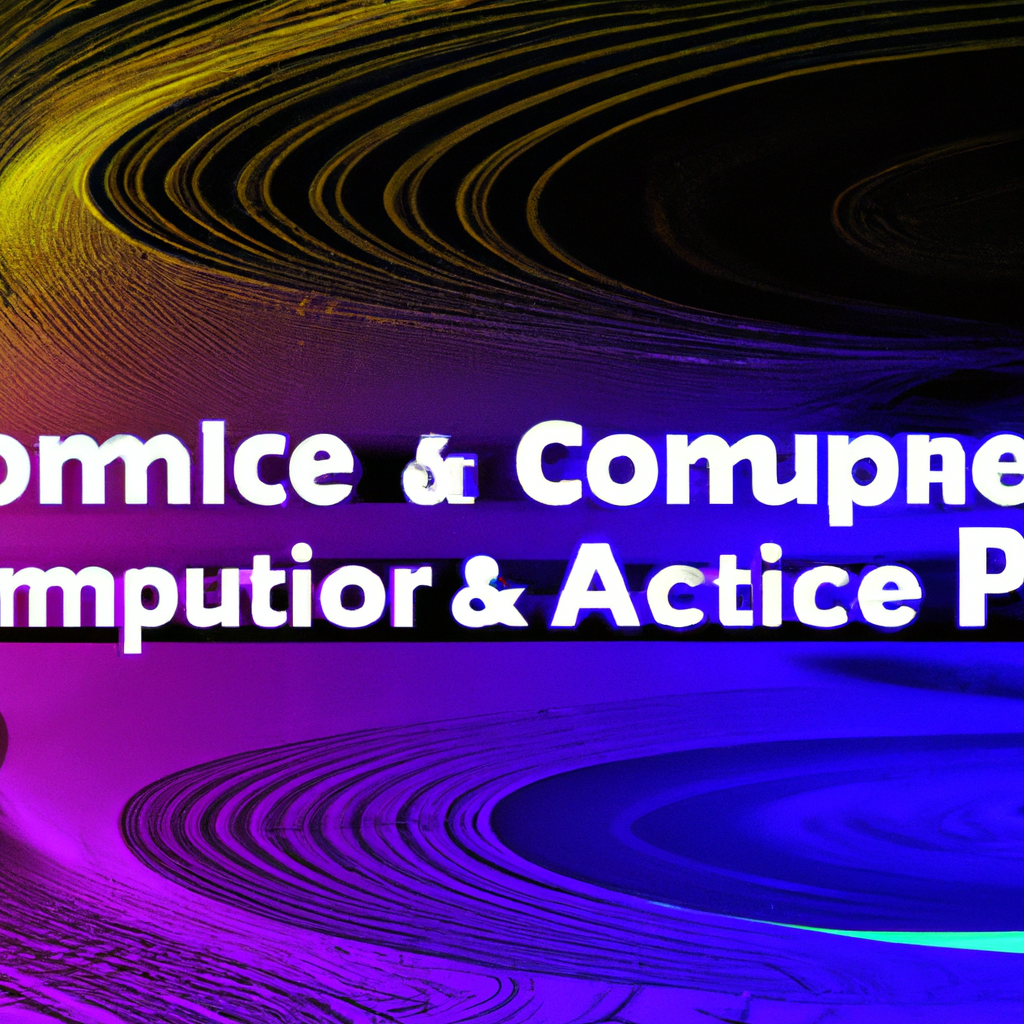Understanding the Principles of Computer Graphics: From Rendering to Animation
Table of Contents
Understanding the Principles of Computer Graphics: From Rendering to Animation
# Introduction
Computer graphics is a fascinating field that has revolutionized the way we perceive and interact with digital content. From video games to movies, computer-generated imagery (CGI) has become an integral part of our lives. In this article, we will delve into the principles of computer graphics, focusing on rendering and animation. We will explore the fundamentals behind these processes and discuss the latest trends and classic algorithms that have shaped the field.
# Rendering: Bringing Virtual Worlds to Life
Rendering is the process of generating an image or sequence of images from a three-dimensional (3D) scene. It involves simulating the behavior of light in a virtual environment to create realistic or stylized visuals. The goal of rendering is to bridge the gap between mathematical representations of objects and our perception of them.
One of the most widely used rendering techniques is called ray tracing. Ray tracing traces the path of light rays as they interact with objects in a scene. By simulating how light bounces off surfaces, ray tracing can produce highly realistic images with accurate reflections, shadows, and global illumination. However, ray tracing is computationally intensive and requires significant processing power. Recent advancements in hardware, such as dedicated ray tracing cores in graphics processing units (GPUs), have made real-time ray tracing feasible in certain applications.
Another popular rendering technique is rasterization. Rasterization involves converting 3D objects into a 2D representation called a raster image. It works by projecting each 3D point onto a 2D plane, determining its color and position based on lighting and surface properties. Rasterization is faster than ray tracing and is widely used in real-time applications like video games. However, it lacks the accurate global illumination and reflections offered by ray tracing.
To enhance the visual quality of rendered images, various shading models are used. Shading models determine how light interacts with surfaces, affecting their appearance. The Phong shading model, introduced by Bui-Tuong Phong in 1973, is a classic example. It approximates the interaction of light with surfaces by considering ambient, diffuse, and specular components. More recent shading models, such as physically-based rendering (PBR), aim to simulate light interactions more accurately by taking into account the physical properties of materials.
# Animation: Breathing Life into Virtual Characters
Animation is the process of creating the illusion of motion through a sequence of static images. In computer graphics, animation involves manipulating 3D models to generate lifelike movements. It is used extensively in video games, movies, and simulations to bring virtual characters and objects to life.
One widely used animation technique is skeletal animation. It involves defining a hierarchical structure of bones or joints within a 3D model. By animating these skeletal structures, complex movements can be achieved. In skeletal animation, keyframes are defined at specific points in time, and interpolation is used to generate smooth transitions between these keyframes. This technique allows animators to create realistic movements with a relatively small number of keyframes.
Another important animation technique is procedural animation. Procedural animation involves defining rules or algorithms that govern the behavior of objects or characters. This allows for the generation of complex movements and behaviors without explicitly animating each frame. Procedural animation is commonly used for simulating natural phenomena such as water, fire, or crowds.
In recent years, machine learning approaches have gained popularity in animation. Generative adversarial networks (GANs) and reinforcement learning algorithms have been used to train virtual characters to exhibit realistic movements and behaviors. These techniques rely on large datasets and advanced algorithms to learn from examples and generate new animations.
# Trends and Future Directions
As computer graphics continues to evolve, several trends are shaping the field. One such trend is virtual reality (VR) and augmented reality (AR). VR immerses users in a fully digital environment, while AR overlays digital content onto the real world. Both VR and AR heavily rely on computer graphics to create realistic and interactive experiences.
Real-time rendering is another significant trend. With the increasing demand for interactive and immersive content, real-time rendering techniques have become crucial. Advancements in hardware, such as GPUs and real-time ray tracing, have made it possible to achieve high-quality graphics in real-time applications.
The field of computer graphics is also exploring the intersection with other domains, such as computer vision and machine learning. Techniques from computer vision, such as object tracking and scene understanding, can enhance the realism of computer graphics applications. Machine learning algorithms can be used to generate realistic animations, synthesize novel content, or improve rendering performance.
# Conclusion
Computer graphics is a vast and ever-evolving field that encompasses rendering and animation. Understanding the principles behind these processes is essential for creating visually stunning and immersive digital content. From the classic algorithms of rendering, such as ray tracing and rasterization, to the animation techniques of skeletal animation and procedural animation, computer graphics continues to push the boundaries of what is possible.
As we look to the future, trends like virtual reality, real-time rendering, and the integration of computer vision and machine learning will shape the field even further. The principles and algorithms discussed in this article serve as the foundation for these advancements, and as technology continues to progress, we can expect even more exciting developments in the world of computer graphics.
# Conclusion
That its folks! Thank you for following up until here, and if you have any question or just want to chat, send me a message on GitHub of this project or an email. Am I doing it right?
https://github.com/lbenicio.github.io

